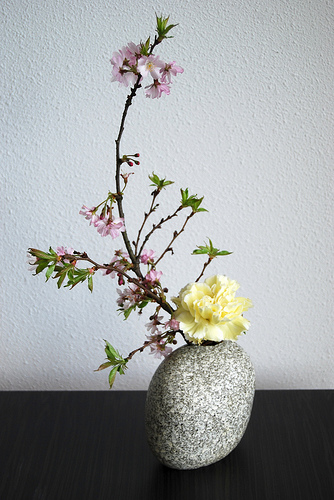The
Japanese treat flowers in a very special way.
A flower is considered a living being just like a man; it has emotions,
it can feel. A flower can take our troubles, our pain - it will die, but will bring us a relief. The life of a flower lasts for one day, maybe a little longer.
But, in the space of one day, its life is as full as that of a man. Is this why the Japanese Buddhists love the
idea of reincarnation? A soul can travel from one existence to another, and,
who knows, maybe by contemplating the beauty of a flower you can be born again
but in the body of a rose or a lily. Buddha himself used the metaphor of a
flower when he spoke of five senses comparing them to five flowers: blue,
yellow, red, white, and black. This is why the Buddhist idea of uniqueness is also present in ikebana.
One single flower, one leaf, and one branch are supposed to transmit all the
beauty and variety of the nature.
 |
| Japanese Ikebana |
Life and
death of flowers
Ikebana
means “giving new life to flowers”. When you cut a flower, you kill it. But,
when it comes to the Japanese art of flower arrangement, ikebana, you also give
it a new life by arranging it in a new way.
So, you resurrect it inside the composition. But this life you give to
the flower will not bring it back to earth. In a way, you create a perfect form
that you can never find in nature. In so doing, you affirm ikebana as some kind
of ideal existence, in opposition to death. In ikebana, we arrange one single branch and
one single flower in the endless space of the Universe and in the endless flow
of time. This work contains one’s whole soul, and, at this moment the single
flower symbolizes the eternal life…

No comments:
Post a Comment